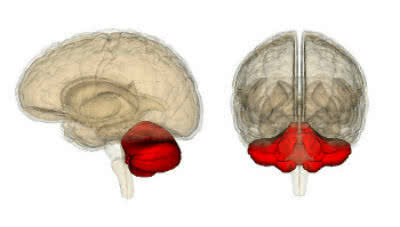Nervous tissue is a tissue of communication, capable of receiving, interpreting and responding to stimuli.
Nerve tissue cells are highly specialized in processing information.
Neurons transmit nerve impulses and glial cells act along with them.
Occupation
The function of nervous tissue is to make communications between the organs of the body and the external environment.
Everything happens very quickly. Through neurons, the nervous system receives stimuli, decodes messages and elaborates responses.
For example, cold (external stimulus) is received by skin receptors, transmitted by sensory neurons, and interpreted in the central nervous system.
Nerve Cells
Nervous tissue cells can be of two types: neurons and glial cells.

Representation of a neuron and glial cells. Note the oligodendrocyte surrounding the neuronal axon
neurons
Neurons transmit information through chemical mediators, the neurotransmitters, it's from electrical impulses.
We can identify three regions in most neurons, they are:
- cell body: in it are located the nucleus and organelles, eg mitochondria.
- Axon: it is a long extension of the cell body, usually single, of constant thickness. It is surrounded by macroglia of two types: Oligodendrocytes and Schwann Cells.
- Dendrites: they are short extensions of the cell body, with many branches that taper at the ends.
They can be of several types and classified as follows:
- according to form: Multipolar, Bipolar and Unipolar Neurons
- According to function: Sensitive Neurons, Motors and Integrators
glial cells
The glial cells, or neuroglia, are much more numerous than neurons. Its function is to nourish and protect the nervous system.
Furthermore, they help to regulate synapses and transmit electrical impulses.
There are two types of glial cells, namely:
- Microglia: protect the nervous system, acting similarly to macrophages.
- Macroglia: There are four subtypes, each with a specific function, helping in the transmission of nerve impulses. They are: astrocytes, oligodendrocytes, ependymocytes and Schwann cells.
Learn more about nerve cells: neurons and glial cells.
Features
Nervous tissue constitutes the organs of the nervous system, which can be classified into two:

Histological section of the Cerebellum. In the central part, in pink, are the extensions of the neurons forming the white matter. On the outside (cortex) are the cell bodies, forming the gray matter.
formed by brain, which is inside the skull, and through the spinal cord.
In the brain and cerebellum, which make up the brain, the cell bodies of neurons are concentrated in the outermost region (cortex) forming the gray matter.
The extensions (axons) form the innermost region called white substance.
while in the marrow spinal, the white matter is more external and the gray is internal
Formed by nerves and ganglia. Nerves are made up of nerve fibers.
Fibers, in turn, are made up of axons and Schwann cells, which cover them.
Ganglia are dilated portions of nerves, where neuron cell bodies are concentrated.
Nervous Impulses and Synapses
THE nerve impulse transmission it is the way neurons communicate. Impulses are phenomena of an electrochemical nature, since they involve chemical substances and the propagation of electrical signals.
At synapses they occur between the extensions of neurons (axon of one cell and dendrites of the neighbor). Occur due to chemical substances, the mediators called neurotransmitters.
Electrical signals generate an action potential in the membranes of neurons, that is, that there is a change in electrical charges.
Read too:
- Human Body Tissues
- epithelial tissue
- Nerves of the Human Body
